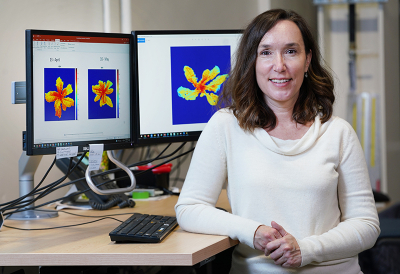
Using hyperspectral imaging, researchers from Purdue University have discovered that kale and basil stressed by cadmium turn to a purple colour. This new method of detecting stress is hoped to advance work to create a soil amendment that binds to the metal and keeps it from the plants.
“It is very difficult to see heavy metal stress in plants”, said Lori Hoagland, professor of Horticulture and Landscape Architecture at Purdue University, who led the research. “We need new tools for it. If we can quickly see it and accurately measure it as the plants grow, we will be better able to develop soil amendments that sequester the harmful metals, as well as identify contamination before it reaches our plates. Our goal is to be able to have drones that fly over fields and detect plant stress from cadmium, lead and arsenic.”
The speed of hyperspectral imaging enables studies of the plants and soil amendments through the different stages of plant development.
“Cadmium contamination of plants is known as a ‘silent killer’ because we can’t see it and don’t typically test for it”, said Hoagland. “The plants do suffer when exposed to high levels of cadmium, but they don’t shrivel and wilt or die. They appear fine, unless the cadmium levels are through the roof. Contaminated plants make it through to maturity and harvesting.”
Cadmium is used in batteries and is often bound to phosphate mined for fertilizers. Throughout the world, it and other heavy metals from waste and pollution seep into the soil and travel to nearby farms where crops absorb them. Consuming high levels of cadmium can lead to kidney disease, bone problems, cancer and other health issues.










